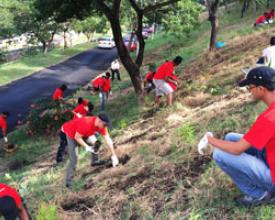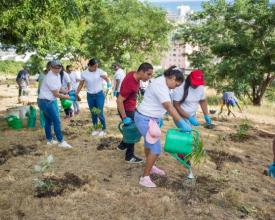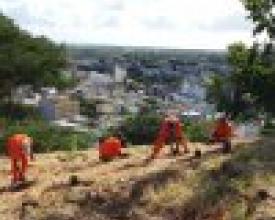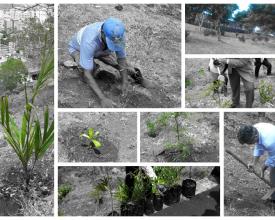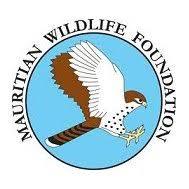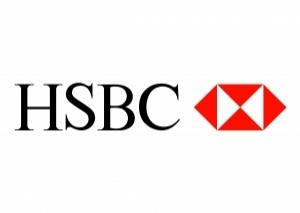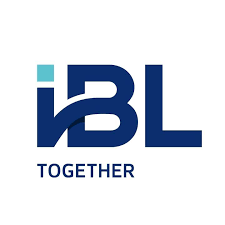
Restoring the vegetation cover and the native forests of biodiversity hotspots in Mauritius
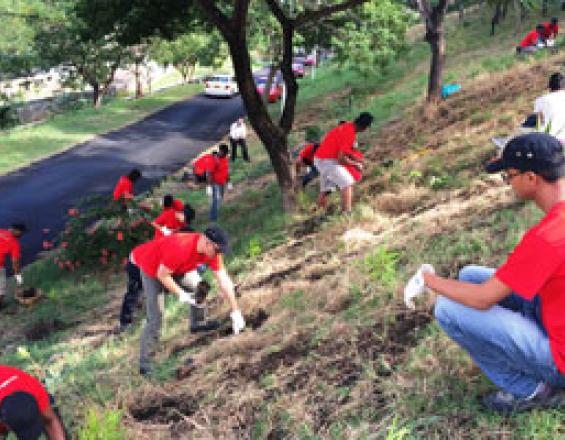
Since 2010, 2.5 ha of Citadel and 18 ha of Petrin were restored with endemic trees. This reforestation project is aiming at conserving the unique biodiversity of Mauritius, allowing complete re-vegetation of the 11 ha of Citadel, reintroducing endemic ecosystem at Petrin which are invaded by exotic alien plants and preserving the ecosystem for the public to appreciate nature. Due to the fire prone grassland of Citadel, there are regular fires which sweep much of the area every year.Fire breaks are created by adding a barrier made of rocks around each plant and regular removal of grass. Herbicides are used in controlling the alien plants at Petrin which are highly dense. Adapted Native species, prevailing to the environmental conditions of the site, were selected to reduce mortality risk. After a ground cover is established and some of the pioneer species start growing, species that need more humidity and shade will be planted.Endangered ecosystem will regenerate through seed dispersal.
Context
Challenges addressed
- Lack of specialized resources and labour for a proper and continuous maintenance of the preserved areas.
-The historical monument, alongside the restored area of Citadel, attracts many tourists and the public in general but the conserved area is not secured in case of thefts, frequent fire attacks by youngsters and damages.
- Presence of invasive plants: there is a need to increase awareness for the conservation of native biodiversity and deleterious effects of invasive alien species through sensitization campaigns.
- Regular occurrence of fire outbreaks - the fire prone open savannah-like community of alien plants to be replaced with a non-fire prone shady native grass or woodland, hence reducing soil erosion and desertification as well.
-There is a need for a reservoir to enable regular watering of the plants.
-There has been deforestation due to economic development needs (Sugarcane Economy and Property Development), leading to only 2% of endemic/native forest remaining on the island.
Location
Process
Summary of the process
For the continuity of the project, we need sustainable funding sources.
Several events are organised such as tree planting ceremonies and clean ups which involve the mentioned NGOs and stakeholders in the building block. These activities support the revival of the Citadel's ecosystem and aim at providing a public green metropolitan area in the heart of the capital city to connect people with nature and foster a healthy living.
Each NGO has different stakeholders helping them. For example : FORENA and FOE share the same problem and success,having as aim to regenerate the total 11 ha of the mountain ecosystem of Citadel.
There is a need to create a holistic approach to this reforestation project by involving as much as possible the stakeholders and collaborating with the mentioned NGOs.
The stakeholders need to know how their money is being spent for the reforestation of Citadel and Petrin.
In a way they are contributing to the conservation of Citadel and Petrin indirectly. Protecting nature should not only reflect the work of non-governmental organisations but also that of stakeholders involved which in a way, would not have been possible without them.
Building Blocks
Reforestation activities by Non Governmental Organisations
FORENA alongside Friends of the Environment(FOE) are currently running the 'Restoration and Valorisation of the Citadel of Port Louis' project, under the Tourism Authority, with a team of experts comprised of architects, historians, archaeologists, and ecologists of the Mauritian Wildlife Foundation (MWF), that envisages the historical restoration and valorisation of the Citadel heritage to be used for tourism, education and leisure purposes.
FOE has been active in the organisation of environmentally important conferences and seminars. They have renovated and now assume management of the Martello Tower Museum and, through the Heritage Trust, continue the rehabilitation of cemeteries. Members have been participating on many committees for the environment over the years.
MWF works for the conservation and preservation of the nation's endangered plant and animal species. They collaborate with local and international partners, with the long-term aim of recreating lost ecosystems by saving some of the rarest species from extinction and restoring the native forests.
Enabling factors
Proper communication between both teams (FORENA and FOE) since we are both working on the same project but on different assigned areas of Citadel.
The same technique is to be applied for tree planting. If one team has changed their methodology and use a more efficient one, then they pass on the information so that the other team can use the same method.
We share the same gardener but each team has their own equipments.
Lesson learned
All the mentioned non-governmental organisations share the same aim which is to be able to have the full re scale restoration at Citadel and to be able to have a proper monitoring of the native forest of Petrin. Forena acts as the link between those organisations and stakeholders to allow continous collaboration for the nature of Mauritius.
There are several techniques which Forena has adopted from Friend of the Environment since they had the expertise of ecologists. For example we have started using gel which allows water and nutrients to be retained around the root base of the plants and also the water bottle technique which allows efficient watering.
There is always a good coordination mechanism between the organisations when there is a case of vandalism or fire outbreak.
Collaboration with Private sectors to enable sustainable financing
For the continuity of the project, we need sustainable finance. Forena is currently partnering with Lux* Resorts and Hotels, Kolos, Rotary clubs, PWC(PricewaterhouseCoopers), Abax, IBL Together(Ireland Blyth Limited), HSBC(Hongkong and Shanghai Banking Corporation Limited) and Porlwi by nature (Ciel Group). It feeds into the overarching project to regenerate the total 11 hectares of the mountain ecosystem.Tree planting and clean up events were done with those stakeholders and their employees. These activities support the revival of the ecosystem of Citadel and Petrin, the reduction of soil erosion and desertification and allow the connection with nature and healthy living. In this way, the stakeholders get to know how their money is being spent for the reforestation of Citadel and Petrin.They are contributing to the conservation and preservation of the native forests of Mauritius indirectly. Protecting nature should not only reflect the work of non-governmental organisation but also that of stakeholders involved which would not have been possible without them.
Enabling factors
Make sure that regular meetings are done with the stakeholders and that they are able to hold grip of what has been done and what needs to be implemented on site.
Each stakeholder must have someone who represents them and who liaises with the non-governmental organisations because sometimes it becomes difficult when a meeting has to be set up due to different working schedules.
Lesson learned
Good collaboration from partners due to their keen interest in working for the environment.
Set a formal relation with the stakeholders, explain to them the purpose and impacts of the project.
Organize activities for them on site followed by a briefing and demonstration.
Do a follow up by sending an activity report of their event and annual report for continuous partnerships in achieving full restoration of the native forest of Citadel and Petrin.
Impacts
The planned fully restored native vegetation cover of Citadel :
1) Provides a pleasant, stress-free environment to recharge from the bustling city life, along with a healthy and pedagogical activity.
2) Constitutes one of the rare instances of re-afforestation on mainland Mauritius that will serve as a concrete example of our contribution towards reducing the excess carbon dioxide in the atmosphere by fixing part of it into plants.
3) Helps the conservation of the Mauritian native wildlife by re-constituting populations of native and endemic species which once existed at Citadel but was destroyed by humans. It is worthwhile to note here that of all the countries in the world, Mauritius has one of the most damaged native biodiversity with many of its unique species threatened with extinction.
4) Reduces soil erosion and desertification as well as the direct risks exposed to people and property by sporadic fires that sweep through the areas every year, by replacing a fire prone open savannah-like community of alien plants with a non-fire prone shady native grass or woodland.
5) Increases awareness for the need of conservation of native biodiversity and deleterious effects of invasive alien species through environmental education at schools.
6) Facilitates Eco-tourism with visits of this restored green area alongside the Citadel, a historical monument.
Beneficiaries
People from the capital city will be able to connect with nature through the restored green area of Citadel. Creation of green jobs (Maintenance and weeding). The tourists will learn about both the historical fort and its native biodiversity.
Sustainable Development Goals
Story
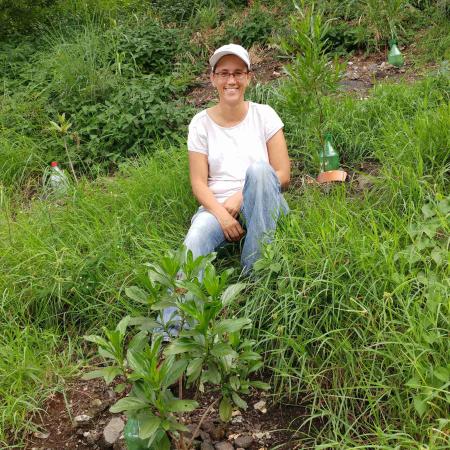
We can't deny that the undesirable impacts of deforestation and global warming are more than ever being felt and already changing the world in terms of human lives and losses to property and agricultural productions. This trend is set to accelerate as more primary growth forests continue to be destroyed and millions of tons of carbon dioxide poured daily into the atmosphere by human activities. At the same time, biodiversity worldwide is declining at an alarming rate, with the planet entering the sixth mass extinction, and is caused by only one species – us.
The native vegetation that once existed on Citadel was destroyed by humans a few centuries ago. The biodiversity at Citadel today overwhelming consists of alien species, including some planted one, doubtless as a result of early deforestation and regular fires sweeping through much of the area every year.
Although its original vegetation was never described, an idea of what it could have been like could be obtained through a comparison with other sites on Mauritius having similar conditions. These include mainly climate (rainfall and temperature) and soil, and to lesser extent the aspect and sloppiness, and distance from coast. It is most likely that the original vegetation of Citadel was a dry forest of relatively stunted trees of about 4 to 6 m tall, with rare emergents, growing at low densities and rich in palms, screw pines and some hardwood trees and shrubs. Plantings are being made in such a way that it looks as far as possible like that in a natural environment, avoiding planting in straight rows for example.
Since 2010, Forena, mainly in collaboration with partners Friends of the Environment, GEF Small Grants Programme, UNDP and Tourism Authority, has achieved the restoration of close to 3 ha of Citadel. Our aim is the full-scale restoration of the Citadel that is 11ha by re-instating a native plant cover suitable native plants respecting the national historical heritage. This will not only contribute to the creation of a sustainable forest and carbon sink in the context of the alarming climate change but it will also enhance the touristic area of Port Louis and help build awareness about our unique biodiversity, notoriously one of the most threatened in the world.
